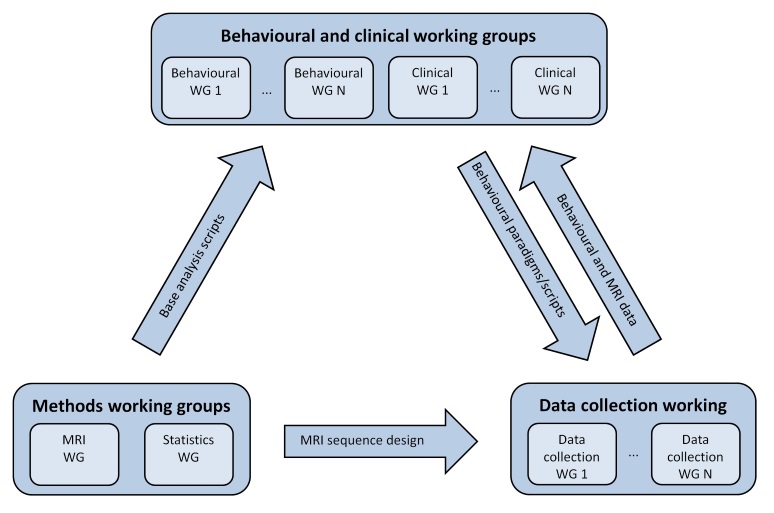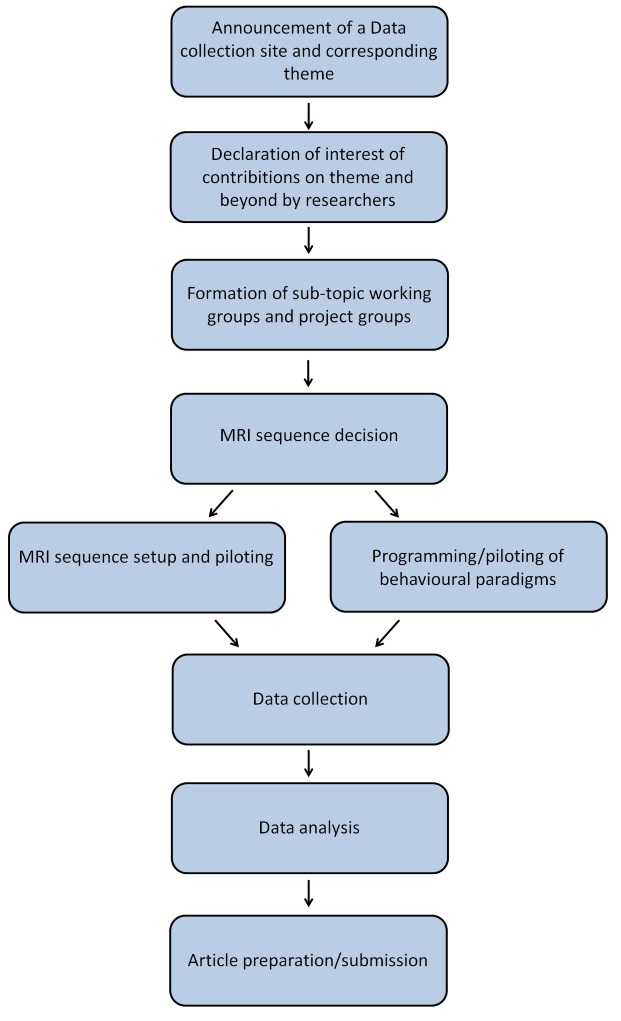About SkuldNet
SkuldNet is a neuroscience consortium established with the aim of exploring the neural architecture of consciousness. The main focus of SkuldNet is linking magnetic resonance imaging (MRI) based neuroarchitectural mapping to normal variation in conscious experience (basic science branch) as well as to diagnosis/prognosis for a range of brain disorders, which have altered or reduced consciousness as a typical symptom.
SkuldNet forms a platform for collaboration where scientists can join forces to conduct high powered MRI studies of normal conscious experience and related clinical disorders as an alternative to conducting smaller scale (potentially under-powered) studies in a race to publish first. By working as a consortium, SkuldNet furthermore strives to ensure that science is conducted efficiently in that MRI sequence design/analysis pipelines as well as statistical analysis pipelines are created in a collaborative effort between expert members, and that they are made available for use by all members (essentially, we aim to simplify these steps of the scientific process by having one group of experts do the base work rather than leaving it to each member to re-invent the process for each study). SkuldNet also emphasizes inclusiveness and equal access: it is open to researchers who do not have access to MRI facilities. This is a natural (and cost-free) consequence of the organizational structure. Finally, SkuldNet has the clear aim that part of the clinical efforts should be targeted at areas where the probability of clinical applicability is high, and SkuldNet seeks to facilitate the transition all the way from basic science results to clinical practice. For this reason, SkuldNet includes clinical practitioners as members as well as artificial intelligence companies. We expect further private companies to sprout from SkuldNet as work progresses.
Current Skuldnet member institutions can be seen here, and includes universities, hospitals, and private companies. SkuldNet members include neuroscientists, medical researchers/practitioners, statisticians, AI researchers, MRI physicists, clinical psychologists, and more. The current member list is here. SkuldNet is open to new members and institutions – let us know if you are interested and would like to hear more about on-going projects.
Organisational structure
Every complex research problem is usually investigated by different research groups in different contexts. Typically, a single research group is specialised in one or only a few types of behavioural phenomena. Thus, when examining a complex phenomenon as consciousness, data and methods integration across research groups becomes a crucial and important challenge. SkuldNet acknowledges that investigations of stable neuroarchitectural characteristics generating conscious experience requires broad discussion and knowledge exchange between different groups involved in consciousness studies. For this reason, SkuldNet research is organised in a number of working groups (WGs) that can be classified as one of four types: Methods, Behavioural topics and paradigms, Clinical, and Data collection. The interrelations between the working groups are shown in the PERT chart below.
There are two Methods WGs: one focusing on MRI methods and one focusing on statistical methods. It is the responsibility of these WGs to make MRI sequences/analysis pipelines and statistical analysis pipelines available to the other WGs. A number of WGs will aim to discuss and develope paradigms to examine various phenomena related to a specific areas of consciousness studies, for example perception, metacognition, sense of control/agency, as well as learning and memory. Clinical WGs will be formed to focus on specific disorders having loss or alteration of consciousness as a central characteristic. Data collection WGs are typically formed at a particular research centre or hospital and collect data for the other groups (researchers who are part of a data collection WG will also typically be part of one or more of the other WGs).

Typical order of events
The exact order of events has yet to be decided, but current experience suggest that something close to what is shown in the flow chart below might be optimal for non-clinical studies. Clinical studies typically have a more standard work-flow as fewer groups will be involved.

(1) Announcement of a Data collection site. The site proposes a tentative topic of interest and discusses potential sequences with the MRI Methods WG (WG_M1). The topic is then announced across the consortium.
(2) Declaration of interest. Consortium members and other interested researchers declare interest contributing paradigms either within the theme or outside. Note that specific paradigm ideas do not need to be shared at this point.
(3) WG formation. WGs are formed based on overlapping interests and projects groups are formed within these. If multiple researchers declare interest in contributing something on very similar topics, we will discuss jointly which way forward makes most sense (e.g. collaboration or examining different aspects).
(4) MRI sequences. MRI paradigm package is decided with input from MRI WG and the involved researchers.
(5) Programming/piloting. The next steps take place in parallel: (a) MRI sequences are set up and piloted, and (b) behavioural experiments are designed, and paradigms programmed/piloted. Around 10 hours of behavioural paradigms are planned per site (around 6 on the site theme plus around 4 on other topics). This process typically lasts 3-6 months.
(6) Data collection. This will often be handled mostly by local researchers/assistants, but it might also be ideal an ideal opportunity for consortium junior researchers to visit another institute. Remember to plan this well in advance for better chances of funding. Typically, data collection for 200-300 participants takes around 1 year (however, analyses can be started before the process is completed).
(7) Data analysis. A large part of the MRI preprocessing and analysis will be similar for all WGs (i.e. the building of the general neuroarchitectural map), and this can thus be shared by the individual WGs. Similarly, the aim is to have a set of standard statistical scripts available to all WGs. More advanced/custom processing can be handled within the behavioural WGs or through collaboration with other consortium members or other researchers).
(8) Article preparation/submission.